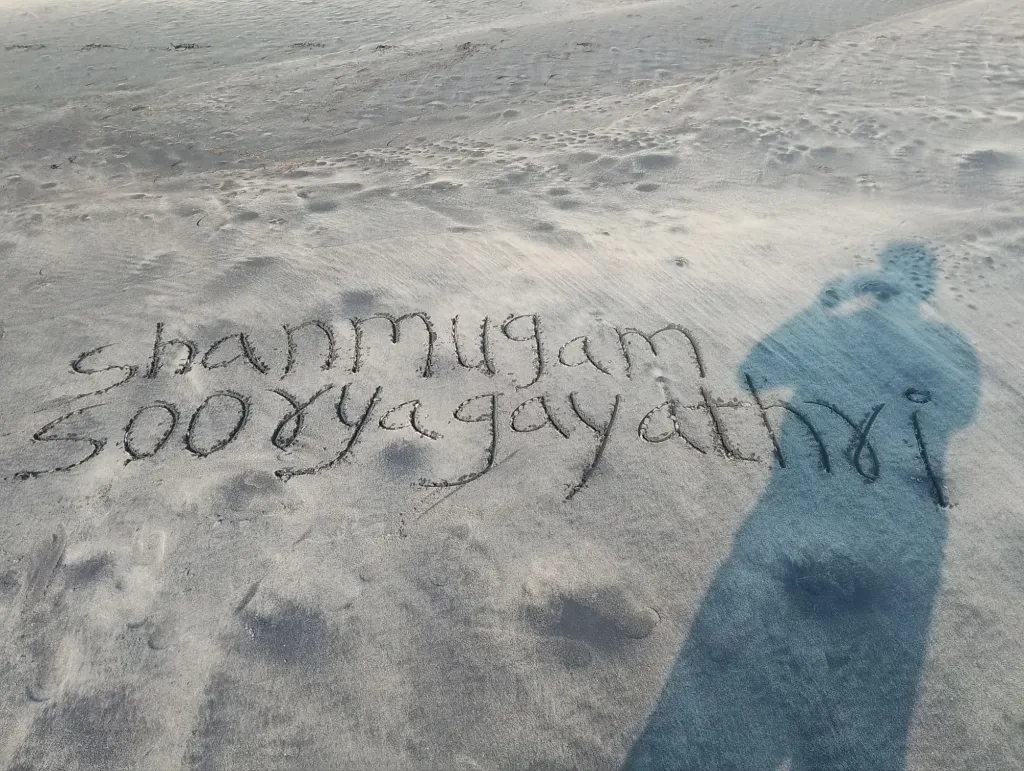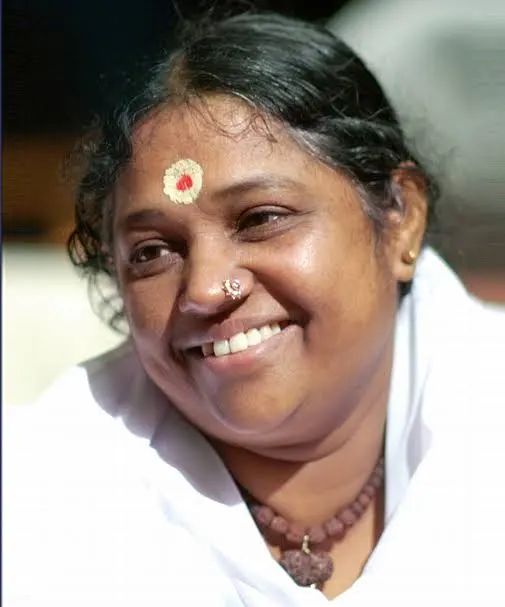I wrote this poem when I was 16 years old.It is written in Asiriyappa meter. You can find the English translation after the poem.
(சிவனை எண்ணி ஆசிரியப்பா வடிவில் நான் எழுதிய கவிதை)
தந்தையும் அன்னையும் இன்றித் தோன்றினான்
அந்தக மான உலக மீதிலே
தோன்று முன்னரும் அவனே அண்டமாய்
ஊன்றி இருந்தனன் ஒளிமிகை செய்தனன்
உருவ மற்றவன் எனினும் அன்பர்
விரும்பும் தோற்றம் நின்று நல்குவன்
மறைகள் வகுத்து மானிடர்க் களித்தனன்
இறையனாய் வண்டமிழ் தந்தனன் தந்ததை
மன்னுமா மதுரையில் விளங்கச் செய்திட
அன்றொரு சங்கம் அமைத்து வளர்த்தனன்
நீறும் உருத்தி ராட்ச மாலையும்
ஆறு தனைப்பிறை தனையுடை ஓதியும்
உறுமும் பெரும்புலி உற்றதோல் கூறையும்
சிறுமை யெரித்திடும் நெற்றியின் விழியும்
என்றிவை கொண்டு மயான மேகி
என்புத்தார் அணிந்து நர்த்தனம் செய்குவன்
பனிச்சூழ் கயிலைச் சிகிரியில் உறைபவன்
நனிச் சிறந்த உமைக்கை பிடிப்பவன்
அப்பனாய் நின்றுபே ரறிவினை நல்குவன்
அன்னையாய் விளங்கிக் கருணை நல்குவன்
குருநா தரைப்போல் தோன்றி ஞானத்
திருவினை அளித்தாட் கொண்டருள் செய்பவன்
அண்ணனாய்த் தம்பியாய்த் தமக்கையும் தானாய்
மாமனாய் அத்தையாய் மனைத்துணை நலமாய்
மடியில் தவழ்ந்து மழலையில் பேசிப்
பிடியில் சிக்கா தோடி யொளிந்தும்
நொடிகள் கழிய வந்துகண் மறைத்தும்
நெகிழ்ந்து நகைக்கும்நம் மகவுமாய் உள்ளவன்
அன்பர்தாம் இட்டவோர் ஏவல் தப்பா
தாற்றி முடிப்பவன் சத்திய வடிவினன்
கூற்றம் உதைத்துக் காக்கும் உயர்ந்தோன்
தூதும் ஏற்பவன் தொல்வினை அறுப்பவன்
ஓதிப் பிரணவம் தனைவி ளக்கும்
சண்முகன் முன்னே அமர்ந்திடும் சீடன்
பண்களைப் பாடித் துதிப்போர் கொண்ட
எண்ணம் தனைநிறைச் செய்யும் சங்கரன்
உற்ற தோழனாய்ப் பழகுதல் செய்பவன்
கற்றவர் செல்வர் உயர்ந்தவர் என்ற
பேதம் காட்டான் பேரொளி ஆனவன்
முதியனாய்த் தோன்றி சலந்திரன் தன்னை
மண்ணில் எழுதியச் சக்கரம் கொண்டு
மாளச் செய்தவன் மேன்மை உடையவன்
நிலத்தவர் உய்ய நஞ்சை உண்டவன்
மலங்க ளைபவன் மாயவன் தன்னைப்
பாடவும் ஏத்தவும் புகழ்ச்சிசெய் திருக்கவும்
ஆடவும் ஆர்க்கவும் பேறுகிட் டாதோ?
அலையும் என்மனம் அடங்கப் பெற்று
நிலையாய்ச் சிவத்தைப் பற்றிவி டாதோ?
உலகம் மெய்யென மயங்கும் பெரும்பிணி
விலகியெம் பெருமான் காட்சிநல் காரோ?
பக்திசெய் வதற்குப் பாவியேன் என்நிலை
சிறுமையோ தகுதி அற்றதோ? காமம்
அறுப்பது யோகியர் மட்டும் செய்வதோ?
சங்கத் தமிழ்ப்பே ராழியில் மூழ்கிப்
பொங்கும் உணர்ச்சியைப் பெருங்கவி யாக்க
நான்மு னைவது தவறோ? தாழ்வோ?
ஏன்நீ எனக்கு விளங்கச் செய்திலை?
கனவில் தோன்றிக் கட்டளை அளித்திடு
தினம்தினம் உன்னைத் துதிக்கும் உளத்தை
இன்றெனக் களித்திடு என்னிறை யோனே
சொல்லவொண் ணாதப் பெருமைகள் கொண்டோய்!
அல்லும் பகலும் அறிவொளி தேடிச்
சிந்தித் திருக்கிறேன் சீக்கிரம் வாநீ!
மந்திரம் தன்னையென் நாவில் எழுதி
எந்திரம் கூரநான் காவியம் பாட
ஓரடி எடுத்தெனக் களித்தருள் செய்யே!
உலகம் உய்யநான் தொண்டுசெய் திடவே
உளங்கொண் டிருப்பதை அறிந்திலை யோநீ?
பேரொளிக் கடலே! பிச்சா டனனே!
வாரண முகத்தனை முருகனை ஈன்ற
பரமேசு வரனே! அன்பின் இருப்பே!
வரந்தரத் தோன்று! நின்முகம் காட்டு!
வாய்திறந் தோர்சொல் கூறிநெஞ் சேகு!
குருதிசேர்ந் திருக்கும் இதயக் கமலத்து
அருகுவந் தேநின்றுப் பொருந்தித் துணைசெய்!
வெள்ளித் திரையுள வடப்புர கங்கையின்
வேகத்தி லேகவி இங்குநான் உரைத்தேன்
தாகம் தணித்திடு! தவசியாய் என்னை
மாற்றி இருத்திடு மண்ணின் வேந்தனே!
சோற்றிலும் நீரிலும் உடுப்பிலும் பாயல்
விரிப்பிலும் குளிப்பிலும் ஆகா யத்திலும்
நிலத்திலும் நெருப்பிலும் காற்றிலும் நின்னையே
கண்டென் நெஞ்சம் களிப்பதும் கூடுமோ?
சம்பந் தனுக்குப் பாலைக் கொடுத்தாய்
சீர்பெரும் அப்பர்பால் சூலை கொடுத்தாய்
சுந்தரர் கையில் ஓலை கொடுத்தாய்
எனக்கேன் தெளிந்திடா மாலைக் கொடுத்தாய்?
இத்தனை துன்பம் எனக்கெ தற்கு?
பக்தியில் என்னைச் சிறந்தோ னாக்கு!
சாத்திரம் நான்மறை இலக்கியம் எல்லாம்
வந்தென் இதயம் புகுந்திட வழிதா!
நமச்சி வாயம் நமச்சி வாயம்
நமச்சி வாயம் என்றென் வாய்சொல
நீறினை இவ்வுடல் உவந்துமேற் கொள்ள
சிவபதம் எண்ணியே வாழ்வினை நடத்த
சிவனே அருள்செய் இன்றேல்
சாகச் செய்யுன் சூலத் தாலே!
Translation:
He appeared without a father and mother in the cosmos full of darkness;
Even before he appeared, he was there as existence; he created light;
Though formless, he appears in the form revered by the devotee;
He gave Vedas (knowledge) to humans; He created the Tamil language;
To promote that language, he set up a sangam in Madurai;
Wearing holy ash, wearing Rudraksha,
Bearing the matted hair that has a river and the moon,
Wearing the skin of a roaring tiger and possessing the third eye that burns away evil,
And wearing a necklace of bones, he dances in a graveyard!
He lives in Kailash that is covered with snow and he holds the hand of the great Uma;
As a father, he gives the greatest knowledge;
As a mother, he gives love;
He appears as a guru, gives the wealth of self-realization and saves us!
He is also the younger and the elder brother; He is the younger and the elder sister;
He is the aunt, uncle and spouse;
He is also the child which crawls in the lap, speaks the infant’s language, runs and hides itself, comes back again, closes your eyes from the back and laughs!
He fulfills the orders of loved ones without fail;
His form is Truth itself;
He kicks the Yama or lord of death and saves you!
He also agrees to be a messenger; He destroys the age old karma;
He is the disciple of Shanmukha who teaches the meaning of Om or pranava mantra;
He is Shankara, who fulfills the wishes of those who worship him by singing songs;
He gets along with you like a friend;
He doesn’t show discrimination based on education, wealth etc; he is the greatest light!
He appeared like an old man in front of Jalandhara, wrote a chakra (discus on the sand and killed him with it; he is great!
He drank poison to save people of the land;
He is the killer of malas (psychological impurities ; He is mayavan (mystical man);
Can’t I be blessed with the opportunity to sing his praise, praise him, dance and rejoice?
Will my wandering mind be tamed and stick to Shiva permanently?
Will the disease that makes me deluded to think that this world is real go away and will my Lord appear to me?
Is my state as being such a sinner too inferior show Bhakti (devotion)? Am I disqualified for it?
Is ending one’s craving possible only for great yogis?
Is my desire to plunge inside the ocean of Tamil and make the bubbling emotions as a great poetry wrong? Why didn’t you clarify the truth to me?
Appear in my dream and tell me what I should do!
Give me the heart to worship you everyday, my Lord!
Oh, the one who has countless things which are great!
At day and at night, I have been thinking and searching for the light of wisdom;
So, come soon!
Write a mantra in my tongue, and give me the first line of the epic that I should write!
Don’t you know that I want to serve for the welfare of this world?
Oh, the ocean of great light! Oh Bhikshatana! (supreme mendicant, Bhikshatana is depicted as a nude four-armed man adorned with ornaments who holds a begging bowl in his hand and is followed by demonic attendants and love-sick women.)
Oh Parameshvara who gave birth to the elephant-headed one and Muruga!
Oh the seat of love! Appear to give me a boon! Show me your face!
Open your mouth and say a word! Reach to my heart!
Come near the blood-filled heart of mine, fix yourself there and give me assistance!
I spoke my poem in the speed of the flowing Ganges in the north;
Quench my thirst and turn me into a tapasvin (ascetic), oh the king of the land!
Can I see you in food, water, clothes, bed, bath, sky, earth, fire and wind and rejoice in that seeing?
You gave milk to Jnana sambandha;
You gave Appar a painful illness in his stomach (intussusception) to make him devoted to you, You gave a palm leaf to Sundarar;
Why did you give me this undying illusion?
Why do I go through all this suffering? Make me better in devotion!
Make way so that the true meaning of the scriptures, Vedas and spiritual literature come to my heart and become obvious!
Grace me so that my mouth repeats the mantra Namah Shivaya, so that I smear myself with holy ash out of glee, so that I live my life always thinking about you! Or just kill me with your sword!




































